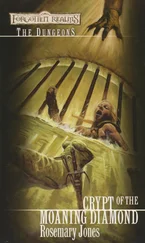Panzergruppe West’s Dilemma
Just four days after the monumental D-Day landings in northern France, RAF Typhoons swooped down out of the skies onto a chateau and neighbouring orchard, followed by Mitchell light bombers of the 2nd Tactical Air Force. Surprised German radio operators and staff officers caught in the open scattered in all directions as the ground shook beneath them. When the prolonged raid was finally over a German general lay dead, along with twelve fellow officers; in one fell swoop Hitler’s panzer forces in Normandy had been successfully decapitated .
Intent on resisting the D-Day landings, Panzergruppe West became an operational combat command on 8 June 1944 at Chateau La Caine; within two days it had sealed its own fate. Allied signal intercepts from four large radio trucks parked in nearby trees were its undoing, tipping off the Allies’ fighter-bombers to its exact location. On the eve of the crucial Battle for Normandy, Panzergruppe West ceased to function .
In the summer of 1944 the battle-hardened German Heer, or Army, and Waffen-SS stood poised to inflict a bloody reverse on the long-anticipated Allied landings in Northern France. That invasion was imminent was beyond doubt following the Allied landings in the Mediterranean the previous year. The failure of Operation Jubilee, the British and Canadian raid on Dieppe on 19 August 1942, had firmly convinced the Germans that they could contain and defeat an Allied amphibious assault on French soil.
However, the German armed forces, or Wehrmacht, stationed in Northern France, much to the advantage of the Allies, were blighted by strategic indecision, a cumbersome chain of command and a succession of commanders, not to mention the meddling hand of Adolf Hitler. The Allied landings in French Northwest Africa in 1942 and the subsequent defeat of the Germans in Tunisia the following year, led Hitler to believe that the Allies might land in the south of France and in the Bay of Biscay.
Generalfeldmarschall Gerd von Rundstedt, Commander-in-Chief West, or Oberbefelshaber West (OB West), expected the Allied invasion of France after the 7th, 10th and 3rd SS Panzer Divisions rolled into Vichy France on 11 November 1943 in response to the Allied landings in Africa. The sixty-nine year old von Rundstedt had commanded Army Groups during the conquest of Poland and France and then led Army Group South during the successful overrunning of Ukraine, but had been dismissed by Hitler after being forced to retreat. Back in favour in July 1942 he had been appointed C-in-C West with the responsibility for fortifying France against the expected Allied invasion.
Rundstedt reasoned the Allies would attack the Pas de Calais as this was the shortest crossing point and just four days march from the vital German industrial region of the Ruhr. The massing of the American 3rd Army and the Canadian 1st Army opposite the Pas de Calais convinced von Rundstedt as well as Generalfeldmarschall Erwin Rommel (who took command of Army Group B stretching from the Dutch border to the Loire in February 1944), and Hitler.
The Allies deliberately blinded the Germans along the Channel by knocking out their radars, though this had to be done in such a selective manner as not to alert the Germans as to the true location of the amphibious assault. RAF Typhoon fighter-bombers played a key role in this, striking sites from Ostend to Cherbourg and the Channel Islands. To help foster the illusion that the Pas de Calais was the most likely crossing point, some radars in this area were left alone. Along the coast, out of ninety-two radar sites only eighteen were operational by the time of the invasion, and they were to be further misled by dummy invasion fleets.
The net result was that Oberkommando der Wehrmacht (OKW – the Armed Forces High Command) gave priority to General Hans von Salmuth’s 15th Army north of the Seine. This meant Rundstedt’s better forces remained in the Pas de Calais area due to the Allies’ successful deception efforts, which had a negative effect on General Friedrich Dollmann’s 7th Army covering Normandy and Brittany. A phantom Allied 4th Army in Scotland also convinced the Germans of a threat to Norway, pinning down even more troops in Scandinavia.
A team of highly experienced Army Group and Corps-level generals surrounded Rundstedt, including Rommel, Dollmann, von Salmuth, Geyr von Schweppenburg, Josef ‘ Sepp’ Dietrich and Erich Marcks. The key players in terms of the panzer forces were Rommel and Schweppenburg; they had the casting votes on how best to deploy the panzers to counter an Allied invasion, which would ultimately result in bitter acrimony.
Hitler accepted Rundstedt’s view though Rommel suspected an attack would take place between Caen and Cherbourg, with a possible second invasion astride the Somme directed toward the port of Le Havre. Following the attack on Dieppe the Germans could not rule out another frontal assault to capture a valuable port. At the time of the Dieppe raid, Dollmann’s 7th Army HQ had noted:
With the reserves afloat were twenty-eight tanks, certainly of the same type as those landed. Now the employment of altogether fifty-eight similar tanks cannot be connected with a brief sabotage operation. Although operational orders have also fallen into our hands, it is not possible to deduce whether it was a question of an operation of local character, or – in case of success – if it would form the initial stage of ‘invasion’.
Many senior German officers assessed that if the Allies had achieved a successful lodgement at Dieppe it would have heralded a full-scale invasion: though Rundstedt did not share this view. What the German commanders did not know was where the main weight of the Allied assault or schwerpunkt might fall, which meant any initial landings were likely to be considered diversionary.
Hitler did take on Rommel’s concerns for Normandy and on 6 May 1944 signalled Rundstedt that he attached great importance to Cherbourg and the Normandy coast. In response the 91st Air Landing Division was sent to the Cotentin Peninsula, the 21st Panzer Division was relocated from Brittany south of Caen and the Panzer Lehr Panzer Division was summoned from Hungary to be positioned south of Chartres. This was bad news for the Allies having selected Normandy for D-Day and Operation Overlord.
By June 1944 about one fifth of Hitler’s field army was occupying Western Europe; Rundstedt had well over half a million men guarding the European coastline, with some fifty-eight divisions stationed in France and the Low Countries. Scattered across Belgium, France and the Netherlands, these forces included ten panzer divisions and one panzergrenadier division. These represented Hitler’s armoured fist.
These forces seemed formidable, particularly for the Allied planners trying to work out the best way to overcome them, Rundstedt though was painfully aware of their shortcomings: ‘I had over 3,000 miles [4,800km] of coastline to cover, from the Italian frontier in the south to the German frontier in the north, and only sixty divisions with which to defend it. Most of them were low-grade units, and some of them were skeletons’. This meant, not even allowing for reserves, one division per fifty miles (eighty kilometres), a clear case of over-stretch. The Allies had thirty-nine divisions, 8,000 bombers and 284 warships, totalling nearly three million men, to throw at the German defences.
Rundstedt’s forces were divided into two Army Groups. Rommel’s Army Group B comprised Dollmann’s 7th Army, consisting of sixteen divisions stationed in northwestern France, and von Salmuth’s 15th Army, consisting of twenty-five divisions stationed in Belgium and northeastern France. Dollmann, a gunner by trade having served with the artillery during the First World War, became commander of 7th Army, an entirely infantry formation in 1939, which he had led into France in May the following year. There he remained with his headquarters in Le Mans, tasked to defend northern France. The infantry divisions of his command were largely ill-equipped, immobile, second-rate units. General Johannes Blaskowitz’s Army Group G consisted of General Kurt von der Chevallerie’s 1st and General Friedrich Wiese’s 19th armies, totalling seventeen divisions, stationed on the Biscay and Riviera coasts respectively.
Читать дальше












